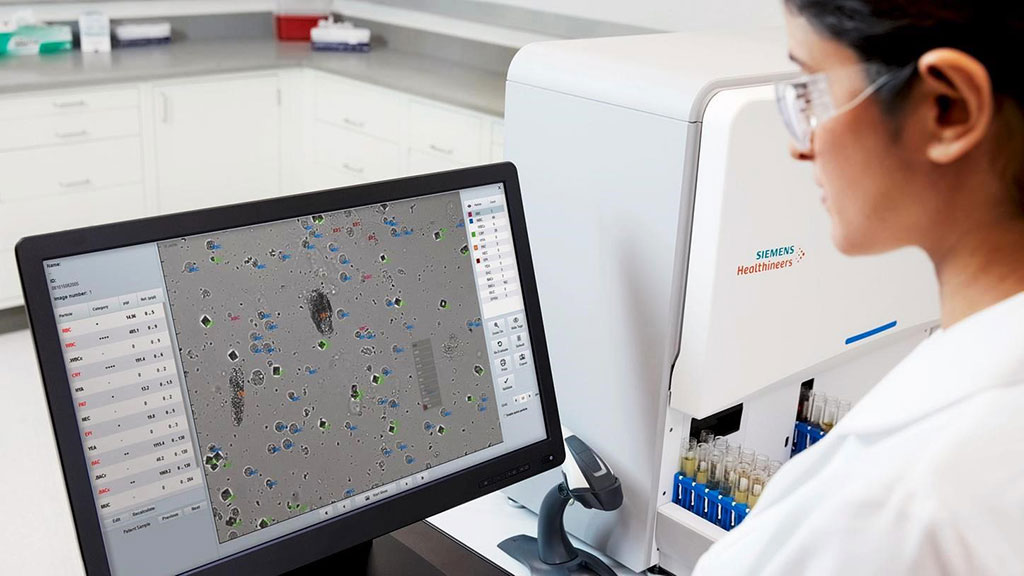Automated Urine Microscopy Analyzer Detects Uropathogen Morphology
By LabMedica International staff writers
Posted on 26 Jan 2021
Urinary tract infection (UTI) is an infectious disease frequently encountered in daily life and is a representative infection that can cause serious sepsis. UTIs are very difficult to diagnose, and unnecessary treatment with antibacterial drugs of conditions with positive urine culture due to asymptomatic bacteria and vulvar‐contaminated urine is often wasteful. Posted on 26 Jan 2021
Currently, the gold standard method of identifying the causative organism of UTI is by bacterial culture, but such tests require long testing time, and obtaining test results concurrently with outpatient treatment is generally impossible. In recent years, automated microscopy has become the main tool currently used worldwide for automated urinary analysis.

Image: The Atellica UAS800 is a completely automated urine sediment analyzer powered by advanced high-resolution digital imaging (Photo courtesy of Siemens Healthineers).
Clinical Laboratory Scientists at the Tenri Health Care University (Tenri, Japan) examined 118 outpatient spot urine samples in which pyuria and bacteriuria (were observed using flow cytometry (training set: 81; cross‐validation set: 37). The team performed Gram‐stain microscopy analysis and urinary culture and conducted strain identification of the grown colonies by matrix‐assisted laser desorption ionization time‐of‐flight mass spectrometry (MALDI‐TOF MS). They used a MALDI Biotyper (Bruker Daltonics, Bremen, Germany).
The scientists used the Atellica UAS800 (Siemens K.K., Tokyo, Japan) which can measure 14 items: total bacteria (BAC), bacilli (BACr), cocci (BACc), erythrocytes (RBC), leukocytes (WBC), hyaline casts (HYA), squamous epithelial cells (EPI), nonsquamous epithelial cells (NEC), crystals (CRY), leukocyte clumps (WBCc), pathological casts (PAT), yeasts (YEA), mucus (MUC), and sperm (SPRM). The Atellica UAS800 is an automated urine microscopy analyzer whose method is based on the principle of capturing and analyzing microscopic images with a digital camera.
The investigators reported that the Atellica UAS800 detection sensitivity was 106 CFU/mL, and reproducibility in that range was good, but data reliability for the number of cocci was low. Multiple logistic regression analysis with each explanatory variable (14 items from the Atellica UAS800, age and sex) showed the best prediction formula for discrimination of uropathogen morphology was a model with five explanatory variables: number of bacilli, squamous epithelial cells, age, number of cocci, and erythrocytes. For a predicted cutoff value of 0.449, sensitivity was 0.879 and specificity was 0.854. In the cross‐validation set, sensitivity was 0.813 and specificity was 0.857.
The authors concluded that the Atellica UAS800 could detect squamous epithelial cells, an indicator of vaginal contamination, with high sensitivity, which further improved performance. Simultaneous use of this probability prediction formula with urinalysis results may facilitate real‐time prediction of uropathogens and vaginal contamination, thus providing helpful information for empiric therapy. The study was published on January 10, 2021 in the Journal of Clinical Laboratory Analysis.
Related Links:
Bruker Daltonics
Tenri Health Care University
Siemens K.K.














